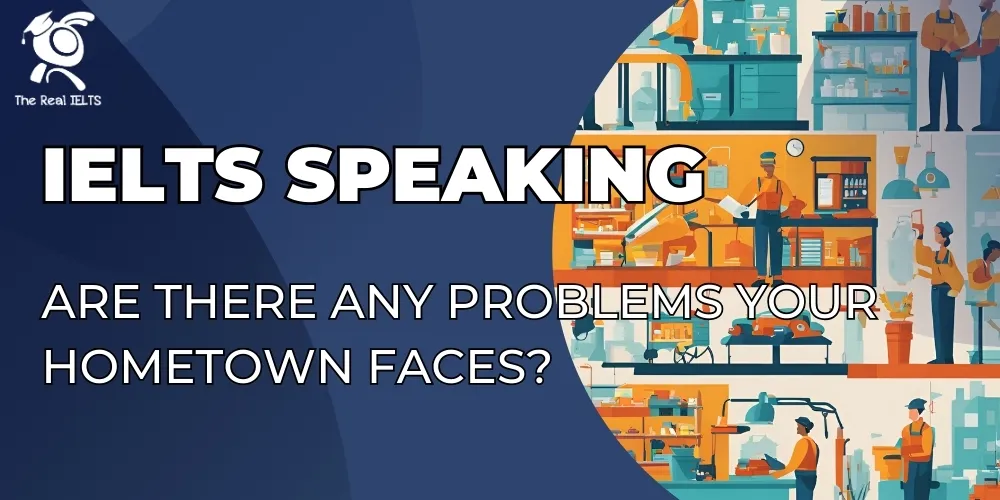Đề bài IELTS Writing task 2 dạng dạng Advantages and Disadvatages: Telemedicine
You should spend about 40 minutes on this task
The shift towards telemedicine in healthcare. Do the advantages of this outweigh the disadvantages?
Write at least 250 words.
Bài mẫu IELTS Writing Task 2 dạng Advantages and Disadvatages: Telemedicine
Introduction
In recent years, telemedicine has gained significant attention as a modern approach to healthcare, enabling patients and medical professionals to interact remotely using digital technologies. The shift towards telemedicine offers various advantages, including improved accessibility and convenience, especially for those in remote areas. However, it also poses certain challenges, such as concerns over data security and the lack of physical examination. Overall, while there are some drawbacks, the benefits of telemedicine seem to outweigh the disadvantages, particularly in improving healthcare access.
Body Paragraph 1 (Advantages)
One of the most prominent advantages of telemedicine is its ability to provide healthcare access to individuals in remote or underserved areas. Traditionally, people in rural regions or those with limited mobility faced difficulties in obtaining medical care. Telemedicine allows them to consult with healthcare providers without the need for travel, saving time and effort. For example, during the COVID-19 pandemic, many patients were able to receive timely care and advice through video consultations, reducing the need for physical visits to hospitals.
Another key benefit is the convenience it offers. Patients can schedule appointments at times that suit them, often with shorter waiting periods compared to traditional clinics. Moreover, telemedicine allows for quicker follow-up consultations, which can be particularly beneficial for managing chronic conditions. For instance, a patient with diabetes may monitor their glucose levels and discuss the results with their doctor remotely, ensuring better and more frequent care.
Body Paragraph 2 (Disadvantages)
Despite these advantages, there are notable disadvantages to telemedicine. One major concern is the lack of physical examination, which can sometimes be crucial for accurate diagnosis. While video consultations may suffice for minor issues, more serious conditions might go unnoticed without a hands-on evaluation. For example, a doctor might miss subtle signs of a heart condition or an infection without being able to physically examine the patient.
Another disadvantage is the potential for data security breaches. The transmission of sensitive medical information over digital platforms raises concerns about privacy and confidentiality. Cyberattacks or data leaks could compromise patients’ personal health data. A well-known case involved the hacking of a healthcare provider’s telemedicine platform, which led to the exposure of thousands of patients’ medical records.
Conclusion
In conclusion, while telemedicine presents certain challenges, such as the inability to perform physical examinations and potential data security risks, the benefits it offers in terms of accessibility and convenience outweigh these concerns. Telemedicine has the potential to revolutionize healthcare delivery, particularly for individuals in remote areas or those with chronic conditions. With proper safeguards and technological improvements, its advantages can continue to expand, making it a vital tool for modern healthcare.
Thống kê cấu trúc câu và cấu trúc ngữ pháp
Cấu trúc câu:
- Câu đơn (Simple sentences): Các câu đơn thường có cấu trúc chủ ngữ (S) + động từ (V) + tân ngữ (O)/ bổ ngữ. Đây là những câu đơn giản với một ý chính, được dùng để truyền đạt thông tin một cách rõ ràng.Ví dụ:
- Telemedicine allows them to consult with healthcare providers without the need for travel.
- Patients can schedule appointments at times that suit them.
- Câu ghép (Compound sentences): Câu ghép là những câu nối hai hoặc nhiều mệnh đề độc lập bằng liên từ (and, but, or, so, yet).Ví dụ:
- Telemedicine allows them to consult with healthcare providers without the need for travel, and it saves time and effort.
- The benefits of telemedicine outweigh the disadvantages, but there are challenges that must be addressed.
- Câu phức (Complex sentences): Câu phức có một mệnh đề chính và một hoặc nhiều mệnh đề phụ thuộc. Các liên từ như “because,” “while,” “although,” “if,” “which” thường được sử dụng.Ví dụ:
- While video consultations may suffice for minor issues, more serious conditions might go unnoticed without a hands-on evaluation.
- Patients can schedule appointments at times that suit them, which can be particularly beneficial for managing chronic conditions.
- Câu ghép-phức (Compound-complex sentences): Câu ghép-phức là sự kết hợp của câu ghép và câu phức, có ít nhất hai mệnh đề chính và một hoặc nhiều mệnh đề phụ thuộc.Ví dụ:
- The shift towards telemedicine offers various advantages, including improved accessibility and convenience, especially for those in remote areas, but it also poses certain challenges such as data security concerns.
Cấu trúc ngữ pháp:
- Thì hiện tại đơn (Present simple tense): Được sử dụng phổ biến để mô tả các sự thật tổng quát hoặc thực tế hiện tại.Ví dụ:
- Telemedicine allows patients to access healthcare services remotely.
- It provides healthcare access to individuals in remote areas.
- Thì hiện tại hoàn thành (Present perfect tense): Được dùng để diễn tả những hành động đã bắt đầu trong quá khứ và tiếp tục đến hiện tại.Ví dụ:
- Telemedicine has gained significant attention in recent years.
- Câu điều kiện loại 1 (First conditional): Sử dụng để nói về những tình huống có thể xảy ra trong tương lai.Ví dụ:
- If the security of telemedicine platforms is not improved, patients’ data might be at risk.
- Câu bị động (Passive voice): Thường dùng khi trọng tâm của câu là hành động hoặc người nhận hành động hơn là người thực hiện.Ví dụ:
- Data security is raised as a significant concern.
- Healthcare access is improved through the use of telemedicine.
- Mệnh đề quan hệ (Relative clauses): Dùng để cung cấp thêm thông tin về danh từ trong câu.Ví dụ:
- Patients can schedule appointments at times that suit them.
- Telemedicine platforms which lack proper security may be vulnerable to cyberattacks.
- Câu so sánh (Comparative sentences): Dùng để so sánh giữa các lợi ích hoặc bất lợi.Ví dụ:
- The benefits of telemedicine seem to outweigh the disadvantages.
Các từ vựng tiếng Anh cần lưu ý trong bài viết
1. Telemedicine
- Định nghĩa: Hình thức chăm sóc sức khỏe từ xa thông qua các phương tiện công nghệ.
- Ví dụ: The shift towards telemedicine offers various advantages, including improved accessibility.
2. Accessibility
- Định nghĩa: Khả năng tiếp cận hoặc dễ dàng sử dụng dịch vụ.
- Ví dụ: Telemedicine improves accessibility for people in rural areas.
3. Convenience
- Định nghĩa: Sự thuận tiện, dễ dàng khi làm việc gì đó.
- Ví dụ: Telemedicine offers the convenience of scheduling appointments from home.
4. Consultation
- Định nghĩa: Buổi tư vấn hoặc cuộc gặp mặt giữa bệnh nhân và bác sĩ để nhận lời khuyên.
- Ví dụ: Video consultations have become more common during the pandemic.
5. Follow-up consultation
- Định nghĩa: Buổi tái khám hoặc kiểm tra sau lần tư vấn ban đầu.
- Ví dụ: Telemedicine allows for quicker follow-up consultations.
6. Chronic condition
- Định nghĩa: Bệnh mãn tính, thường kéo dài và khó chữa trị hoàn toàn.
- Ví dụ: Patients with chronic conditions benefit from more frequent consultations via telemedicine.
7. Physical examination
- Định nghĩa: Khám bệnh trực tiếp, bác sĩ kiểm tra cơ thể bệnh nhân để chẩn đoán.
- Ví dụ: The lack of physical examination is a major drawback of telemedicine.
8. Diagnosis
- Định nghĩa: Quá trình xác định bệnh dựa trên các triệu chứng.
- Ví dụ: Telemedicine may not always provide an accurate diagnosis for serious conditions.
9. Data security
- Định nghĩa: Bảo mật dữ liệu, bảo vệ thông tin cá nhân khỏi bị truy cập trái phép.
- Ví dụ: Data security concerns arise when sensitive medical information is transmitted online.
10. Privacy
- Định nghĩa: Sự riêng tư, đặc biệt là trong việc bảo mật thông tin cá nhân.
- Ví dụ: Privacy issues are a significant concern in telemedicine platforms.
11. Cyberattack
- Định nghĩa: Cuộc tấn công mạng, xâm nhập hệ thống để đánh cắp thông tin hoặc gây thiệt hại.
- Ví dụ: A cyberattack on a telemedicine platform could expose patient records.
12. Underserved areas
- Định nghĩa: Khu vực thiếu dịch vụ, đặc biệt là dịch vụ y tế hoặc giáo dục.
- Ví dụ: Telemedicine provides healthcare access to underserved areas.
13. Hands-on evaluation
- Định nghĩa: Đánh giá trực tiếp bằng cách tiếp xúc hoặc kiểm tra cơ thể bệnh nhân.
- Ví dụ: A hands-on evaluation is sometimes necessary for diagnosing serious health issues.
14. Revolutionize
- Định nghĩa: Cách mạng hóa, thay đổi một lĩnh vực một cách triệt để.
- Ví dụ: Telemedicine has the potential to revolutionize healthcare delivery.
15. Healthcare provider
- Định nghĩa: Người cung cấp dịch vụ y tế, như bác sĩ, y tá, hoặc bệnh viện.
- Ví dụ: Telemedicine allows patients to consult with healthcare providers remotely.
16. Exposure
- Định nghĩa: Việc bị lộ thông tin nhạy cảm hoặc bị phơi nhiễm.
- Ví dụ: Data breaches could lead to the exposure of private health information.
Đọc thêm về bài viết gợi ý luyện thi IELTS.















